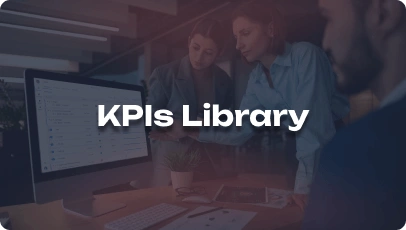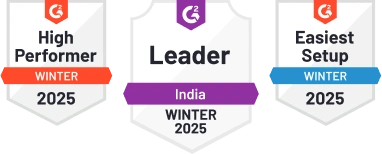Logistics Operation Executives play a crucial role in the Logistics/Supply Chain industry by overseeing and optimizing the movement of goods, managing inventory, and ensuring efficient operations. Mastering this role is essential for success as it directly impacts cost-effectiveness, customer satisfaction, and overall supply chain performance. In today’s dynamic environment, Logistics Operation Executives need to adapt to technological advancements, sustainability practices, and global supply chain challenges to drive operational excellence.
1. Can you explain the role of a Logistics Operation Executive in the supply chain process?
As a Logistics Operation Executive, my role involves managing transportation, warehousing, and inventory activities to ensure seamless flow of goods from suppliers to customers.
2. How do you stay updated with the latest trends and technologies in the logistics industry?
I regularly attend industry conferences, subscribe to logistics publications, and network with professionals to stay informed about new technologies and best practices.
3. What key performance indicators (KPIs) do you use to measure the efficiency of logistics operations?
I track KPIs such as on-time delivery, order accuracy, inventory turnover, and transportation costs to gauge the effectiveness of logistics operations.
4. How do you ensure compliance with regulations and international trade requirements in logistics operations?
I work closely with legal and compliance teams, stay updated on regulatory changes, and implement robust processes to ensure adherence to trade laws and regulations.
5. Can you discuss a challenging logistics problem you faced and how you resolved it?
During a peak season, we experienced a surge in orders leading to warehouse congestion. I optimized storage space, reorganized picking processes, and collaborated with carriers to streamline deliveries.
6. How do you prioritize tasks and manage time effectively in a fast-paced logistics environment?
I use prioritization techniques like ABC analysis, leverage digital tools for task management, and delegate responsibilities to ensure timely execution of critical tasks.
7. What strategies do you implement to reduce transportation costs while maintaining service levels?
I consolidate shipments, optimize route planning, negotiate with carriers for better rates, and leverage technology for real-time tracking to minimize transportation costs.
8. How do you ensure effective communication and collaboration among different stakeholders in the supply chain?
I establish regular communication channels, use collaboration platforms, conduct cross-functional meetings, and share relevant data to foster transparency and collaboration across stakeholders.
9. How do you address inventory management challenges such as stockouts and excess inventory?
I implement demand forecasting models, safety stock strategies, and continuous monitoring to prevent stockouts and excess inventory, ensuring optimal inventory levels.
10. Can you discuss your experience with implementing warehouse management systems (WMS) or enterprise resource planning (ERP) systems in logistics operations?
I have led WMS/ERP implementations to automate workflows, improve inventory accuracy, and enhance order fulfillment processes, resulting in operational efficiency gains.
11. How do you adapt logistics operations to meet sustainability goals and reduce the environmental impact?
I collaborate with eco-friendly suppliers, optimize transportation routes for fuel efficiency, implement packaging recycling initiatives, and promote green practices across the supply chain.
12. How do you handle disruptions in the supply chain, such as natural disasters or labor strikes?
I develop contingency plans, maintain alternative sourcing options, establish communication protocols, and coordinate with stakeholders to mitigate the impact of supply chain disruptions.
13. What role do data analytics and predictive modeling play in optimizing logistics operations?
Data analytics and predictive modeling help in forecasting demand, optimizing inventory levels, improving routing efficiency, and making data-driven decisions to enhance overall logistics performance.
14. How do you ensure quality control and compliance with product handling standards in logistics operations?
I conduct regular audits, implement quality control processes, provide training to staff on product handling standards, and maintain documentation to ensure compliance with quality requirements.
15. Can you share your experience in managing cross-border logistics operations and overcoming international trade challenges?
I have expertise in navigating customs regulations, managing documentation for imports/exports, coordinating with customs brokers, and resolving cross-border logistics issues to ensure smooth international trade operations.
16. How do you assess the performance of logistics service providers and carriers to ensure service quality?
I conduct performance evaluations, review service level agreements, track key metrics like transit times and damages, and address any issues through feedback mechanisms to maintain service quality standards.
17. What strategies do you employ to optimize warehouse layout and maximize storage capacity?
I use warehouse layout design software, implement slotting techniques, analyze SKU velocity, and employ vertical storage solutions to optimize space utilization and increase storage capacity.
18. How do you manage risks associated with global supply chains, such as geopolitical instability or trade disputes?
I conduct risk assessments, diversify sourcing locations, maintain buffer inventory, establish alternative transportation routes, and stay informed about geopolitical developments to mitigate supply chain risks.
19. Can you discuss your experience in implementing lean principles or Six Sigma methodologies in logistics operations?
I have applied lean principles to eliminate waste, streamline processes, and improve efficiency in logistics operations. I also utilize Six Sigma methodologies for continuous process improvement and quality assurance.
20. How do you foster a culture of continuous improvement and innovation within the logistics team?
I encourage team members to share ideas, implement feedback mechanisms, conduct regular training sessions on new technologies, and recognize innovative solutions to drive continuous improvement and foster a culture of innovation.
21. How do you ensure the security and integrity of goods during transportation and storage?
I implement strict access control measures, use tracking technologies like GPS and RFID, conduct security audits, and collaborate with security agencies to safeguard goods from theft or damage.
22. How do you handle customer complaints related to logistics issues and ensure timely resolution?
I prioritize customer feedback, investigate root causes of complaints, implement corrective actions, and establish communication channels to keep customers informed about the resolution process, ensuring timely and satisfactory outcomes.
23. What role does automation and robotics play in modernizing logistics operations?
Automation and robotics enhance efficiency in tasks like order picking, packing, and inventory management, reducing lead times, minimizing errors, and increasing overall operational productivity in logistics operations.
24. How do you balance cost optimization with service quality in logistics operations?
I conduct cost-benefit analyses, identify areas for cost savings without compromising service levels, leverage technology for cost efficiencies, and prioritize service quality to strike a balance between cost optimization and customer satisfaction.
25. Can you discuss your experience in managing reverse logistics processes and handling product returns effectively?
I have developed reverse logistics strategies, optimized return processes, implemented restocking procedures, and collaborated with suppliers to manage product returns efficiently, ensuring customer satisfaction and inventory control.
26. How do you ensure the safety and compliance of transportation operations, especially with hazardous materials?
I adhere to regulatory requirements for transporting hazardous materials, provide specialized training to staff, conduct safety audits, use proper labeling and packaging, and maintain emergency response plans to ensure safety and compliance in transportation operations.
27. What strategies do you employ to optimize last-mile delivery and enhance customer experience?
I leverage route optimization software, utilize local distribution centers, implement delivery tracking systems, offer flexible delivery options, and prioritize customer communication to optimize last-mile delivery and enhance customer experience.
28. How do you manage relationships with key stakeholders such as suppliers, carriers, and customers to ensure smooth logistics operations?
I establish clear communication channels, build strong partnerships, negotiate mutually beneficial contracts, conduct regular performance reviews, and address issues proactively to maintain positive relationships with key stakeholders and ensure smooth logistics operations.
29. Can you discuss a successful project where you implemented process improvements that resulted in cost savings or efficiency gains?
I led a project to reengineer the order fulfillment process, reducing lead times by 20% and saving costs by optimizing inventory levels, enhancing picking efficiency, and streamlining transportation operations.
30. How do you stay resilient and adapt to changing market dynamics and disruptions in the logistics industry?
I embrace change, remain agile in decision-making, foster a culture of innovation, continuously monitor market trends, and proactively adjust strategies to adapt to evolving market dynamics and disruptions in the logistics industry.







